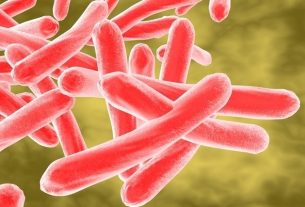Pelvic inflammatory disease is an inflammation and infection that affects the female reproductive organs and originates in the vagina, progressing and affecting the uterus, tubes and ovaries, spreading over a large pelvic area, and occurring in most cases as a consequence of an infection. that was not properly addressed.
Pelvic inflammatory disease, also called PID, mainly affects sexually active adolescents and young women, with several sexual partners, who do not use condoms and who maintain the habit of washing the vagina internally, as these situations can cause an imbalance in the normal vaginal microbiota and increase the risk of infections, especially from Chlamydia trachomatis or Neisseria gonorrhoeaewhich are the bacteria most frequently associated with PID.
Although it is normally related to sexually transmitted infections, PID can also be related to other situations such as IUD placement or endometriosis, which is a situation in which endometrial tissue grows outside the uterus. Learn more about endometriosis.

PID symptoms
The main symptoms of PID are:
- Fever equal to or greater than 38ºC;
- Pain in the abdomen and pelvic region, especially during palpation;
- Vaginal bleeding outside of menstruation or after sexual intercourse;
- Yellowish or greenish vaginal discharge with a bad smell;
- Burning sensation when urinating;
- Pain during intimate contact, especially during menstruation.
In most cases, pelvic inflammatory disease can be very subtle, and women are not always able to notice its signs and symptoms, favoring the proliferation of microorganisms and resulting in greater inflammation of the genital region.
How the diagnosis is made
The diagnosis of pelvic inflammatory disease is made by the gynecologist based on observation and evaluation of the symptoms presented by the woman.
In addition, the doctor may also recommend imaging tests, such as pelvic or transvaginal ultrasound, computed tomography, magnetic resonance imaging or laparoscopy, which is the test that usually confirms the disease. In addition, the doctor may indicate that vaginal secretion is analyzed in order to identify the microorganism related to the inflammation.
Make an appointment with your nearest gynecologist to investigate the possibility of PID:
Taking care of your health has never been easier!
DIP stages
Based on the results of the diagnostic tests carried out, the doctor is able to verify the stage of the disease, which are:
- Stadium 1: Inflammation of the endometrium and tubes, but without infection of the peritoneum;
- Stadium 2: Inflammation of the tubes with infection of the peritoneum;
- Stadium 3: Inflammation of the tubes with tubal occlusion or tubo-ovarian involvement, and intact abscess;
- Stadium 4: Rupture tubo-ovarian abscess, or purulent secretion in the cavity.
Therefore, by identifying the severity of PID and the infectious agent responsible, it is possible that the most appropriate treatment will be indicated.
Main causes
The main causes of pelvic inflammatory disease are:
- Untreated sexually transmitted infections (STIs), mainly chlamydia and gonorrhea;
- Contamination by some bacteria at the time of birth;
- Introduction of contaminated objects into the vagina during masturbation;
- Abortion;
- Use vaginal douches;
- IUD placement less than 3 weeks ago;
- Endometrial biopsy or uterine curettage.
Women who are most likely to develop this type of inflammation are those between 15 and 25 years of age and who do not use condoms during all sexual relations.
What is the treatment like?
Treatment for pelvic inflammatory disease must be guided by a gynecologist, who normally recommends the use of antibiotics orally or intramuscularly for around 14 days.
Some antibiotics that may be indicated are ceftriaxone, metronidazole, doxycycline or azithromycin, for example. It is important to emphasize that when starting treatment with antibiotics, symptoms may disappear, and treatment should continue for the time indicated by the doctor.
Furthermore, it is important to rest, avoid sexual intercourse during treatment and use a condom, to give the tissues time to heal, and remove the IUD, if applicable.
During treatment, it is recommended that the sexual partner is also treated even if they do not have symptoms to avoid recontamination and surgery may be necessary to treat inflammation of the fallopian tubes or to drain abscesses. Understand how PID is treated.
Is there a cure for PID?
Pelvic inflammatory disease can be cured if diagnosed in time. However, if the disease has caused any damage, it will be permanent.
Furthermore, if adequate treatment is not carried out, complications may arise, such as infertility, ectopic pregnancy, chronic abdominal pain or obstruction of the fallopian tubes.
Bibliography
- CDC. Pelvic Inflammatory Disease (PID) – CDC Basic Fact Sheet. Disponível em: <https://www.cdc.gov/std/pid/stdfact-pid.htm#:~:text=What%20is%20PID%3F,transmitted%20can%20also%20cause%20PID.>. Acesso em 06 set 2023
- NATIONAL LIBRARY OF MEDICINE. Pelvic Inflammatory Disease. 2023. Available at: <https://www.ncbi.nlm.nih.gov/books/NBK499959/>. Accessed on September 7, 2023

Sign up for our newsletter and stay up to date with exclusive news
that can transform your routine!
Warning: Undefined array key "title" in /home/storelat/public_html/wp-content/plugins/link-whisper-premium/templates/frontend/related-posts.php on line 12
Warning: Undefined array key "title_tag" in /home/storelat/public_html/wp-content/plugins/link-whisper-premium/templates/frontend/related-posts.php on line 13



